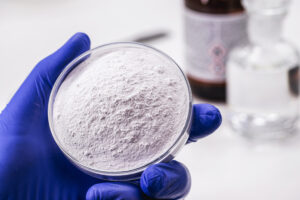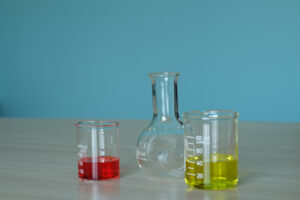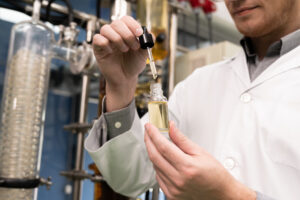
Tartaric acid, a naturally occurring organic acid, plays a critical role in the pharmaceutical industry. Whether used as a buffering agent, excipient, or chiral intermediate, it supports the efficacy, solubility, stability, and taste of various drug formulations.
In this comprehensive guide, we’ll answer the key question: What is tartaric acid used for in pharma? From its functionality in tablets and syrups to its involvement in active pharmaceutical ingredient (API) synthesis, this blog explores all major use cases and benefits of tartaric acid in modern medicine.
Explore a leading manufacturer of APIs.
With over 10 years of expertise, we ensure GMP compliance and provide reliable, high-quality solutions.
What is Tartaric Acid?
Tartaric acid (C₄H₆O₆) is a naturally occurring, water-soluble dicarboxylic acid. The L(+)-isomer is the most commonly used form in pharmaceutical applications. It is non-toxic and widely approved by global pharmacopeias like IP, BP, USP, and EP.
Key Properties:
- Strong acidulant
- Chiral compound (optically active)
- High solubility in water and ethanol
- Compatible with a wide range of excipients
What is Tartaric Acid Used for in Pharma?
1. Effervescent Formulations
Tartaric acid is commonly combined with sodium bicarbonate in effervescent tablets and powders. When dissolved in water, the two react to release carbon dioxide, creating a fizzy solution that delivers the drug in a palatable, fast-dissolving form.
Used In:
- Vitamin C tablets
- Digestive enzyme powders
- Electrolyte rehydration sachets
2. Excipient in Oral Solid Dosage Forms
Tartaric acid serves as an excipient in tablets, capsules, and lozenges to improve disintegration, dissolution, and taste masking. It’s often used in conjunction with active ingredients to:
- Aid tablet breakdown
- Stabilize pH in the gastrointestinal tract
- Improve mouthfeel and taste
3. Buffering Agent in Liquid Formulations
In oral syrups, suspensions, and injectables, tartaric acid acts as a pH regulator or buffer. It helps maintain drug stability over time, which is especially important for moisture-sensitive or pH-sensitive active pharmaceutical ingredients (APIs).
Benefits:
- Maintains consistent drug release profile
- Enhances shelf life
- Improves solubility of APIs
4. Chiral Intermediate in API Synthesis
Tartaric acid is optically active, making it valuable in asymmetric synthesis. It’s used to separate racemic mixtures and synthesize chiral APIs—molecules that require specific 3D configurations for biological activity.
Used In:
- Cardiovascular drugs
- Anti-inflammatory drugs
- CNS medications
5. Taste Modifier in Pediatric Syrups
Pharmaceutical syrups—especially those intended for pediatric or geriatric patients—require a tart yet pleasant taste. Tartaric acid offers a sour note that masks the bitterness of certain drugs.
Used In:
- Antipyretic syrups
- Cough syrups
- Antacids
6. Solubility Enhancer
In many cases, APIs are not fully soluble in water. Tartaric acid helps form soluble complexes, improving the bioavailability of such drugs.
Used In:
- Nutritional supplements
- Herbal formulations
- Combination drugs
7. Filler or Bulking Agent
In chewable tablets or lozenges, tartaric acid is also used as a bulking agent, adding structure and texture to the product.
Why Tartaric Acid is Preferred in Pharma Manufacturing
| Attribute | Pharmaceutical Benefit |
|---|---|
| Optically active | Enables synthesis of chiral APIs |
| Highly soluble | Enhances dissolution and absorption |
| Non-toxic and natural | Safe for human consumption |
| Recognized by pharmacopeias | Compliant with IP, BP, USP, EP |
| Stable and pure | Consistent quality for regulated applications |
Where is Pharma-Grade Tartaric Acid Manufactured?
High-quality pharmaceutical-grade tartaric acid is typically manufactured in GMP-compliant, ISO-certified facilities. One such trusted supplier is Chemignition Laboratory, based in India and exporting to 50+ countries worldwide.
Trusted Supplier for Pharma-Grade Tartaric Acid
Chemignition Laboratory is a GMP-certified, ISO 9001:2015 manufacturer of pharma-grade tartaric acid with:
- IP/BP/USP/EP compliant grades
- COA, MSDS, TDS, and documentation
- Moisture-proof packaging for global export
- Custom batch sizes and bulk supply
- Full traceability and export documentation
Packaging Options
| Packaging Format | Size | Application |
|---|---|---|
| Fiber Drum | 25 kg | Pharma-grade supply |
| HDPE Drum | 25 kg | Industrial pharma use |
| Vacuum Pouch | Custom | Sample or R&D batches |
Documentation Provided
- Certificate of Analysis (COA)
- Material Safety Data Sheet (MSDS)
- Technical Data Sheet (TDS)
- Packing List & Invoice
- Certificate of Origin
Global Markets Served by Chemignition
- United States
- Canada
- Germany
- United Kingdom
- UAE
- Saudi Arabia
- South Africa
- Bangladesh
- Vietnam
- Australia
Chemignition handles all exports with air and sea freight support, prepares customs-ready packaging, and provides real-time tracking.
How to Source Tartaric Acid for Pharmaceutical Use
Ready to order tartaric acid for your pharma formulation or R&D pipeline?
🌐 Website: www.chemignition.com
FAQs
What is tartaric acid used for in pharma?
Tartaric acid is used as a buffer, excipient, solubility enhancer, chiral intermediate, and taste modifier in pharmaceutical formulations.
Is tartaric acid safe for pharmaceutical use?
Yes. Tartaric acid is non-toxic and widely approved by pharmacopeias like IP, BP, USP, and EP.
Can tartaric acid improve solubility of drugs?
Yes. Tartaric acid can enhance solubility and absorption, especially in oral dosage forms like syrups and effervescent tablets.
Does tartaric acid help in pediatric syrup formulation?
Absolutely. It serves as a taste modifier, masking bitter APIs with a pleasant sourness.
Where can I buy pharma-grade tartaric acid in bulk?
You can source high-purity tartaric acid from Chemignition Laboratory, a GMP-certified supplier serving over 50 countries.



